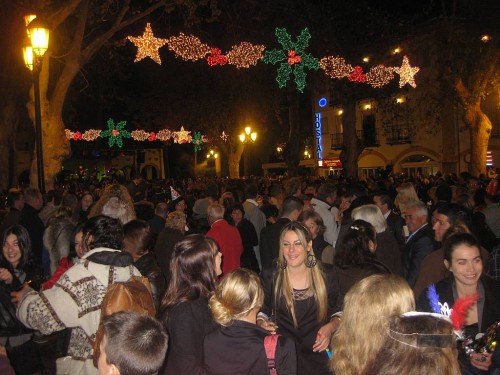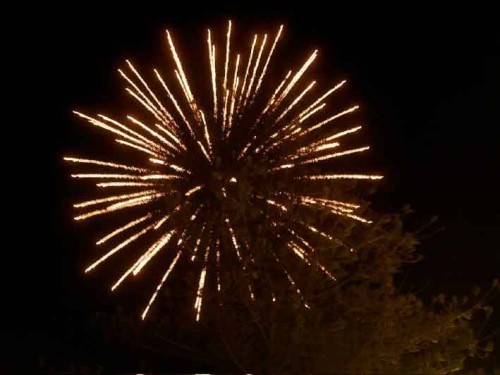Christmas may be a very quite and subdued celebration in Spain, but New Year certainly isn’t and is definitely something to be experienced.
So, what happens in Nerja on New Year’s Eve?
New Year’s Eve, referred to as either ‘nochevieja’ or ‘fin de año’, traditionally begins with a family meal, either at home or, more often these days, at a local restaurant. This tendency to eat out means, of course, that booking a table is fairly essential and generally needs to be done quite some time in advance.
The more popular the local restaurant, the earlier it becomes advisable to book. It is not unknown for people to reserve their table twelve months in advance, but that is a bit extreme.
There are quite a few restaurants nowadays offering a sort of ‘package’, which includes a meal, midnight grapes (more about those later) and in-house entertainment.
New Year is a time for dressing up, suits and evening dresses being a common sight wherever you go in town, although, it has to be said, far less so with the foreign residents. Red underwear is the order of the day, or night, as this is said to bring good luck!
Right then. You’ve had your meal, or not as the case may be, and the hour approacheth. Suitably attired, complete with red knickers, it’s off to the Balcón de Europa.
The first thing to do is pick up your complimentary ‘pack’, consisting of a small bottle of Cava (Spanish champagne), a bag of twelve grapes and an assortment of funny paper hats, noses, moustaches etc. All part of the fun.
Looking elegant, but suitably silly, the countdown to midnight begins. Someone on the stage at the Balcón will be babbling fifty to the dozen as the minutes tick away.
The bell in the Iglesia El Salvador begins to chime the approach to midnight and then the countdown begins!
The idea is to eat one grape and take a sip of champagne with each chime of midnight, and let me tell you it’s no easy feat! If you manage it, then it is supposed to bring you luck for the coming year. Taking you own seedless grapes can assist in the task!
- The origin of the twelve grapes lark goes back to 1909, when the grape growers in Alicante thought it was a great way to get rid of their huge production surplus that year. The idea caught on and now, almost every Spaniard observes what has become a tradition.
One year, after a couple of years of half-hearted, and woefully inadequate, attempts at consuming the requisite number of grapes, complete with pips, I made a concerted effort. After all, a bit of good luck never goes amiss. And makes a nice change!
Anyway, chomp-chomp-swig, chomp-chomp-swig….keeping up nicely. As I finished the last grape and took a final swig of Cava….DONG. I was gutted. I’d somehow beaten the clock and had nothing left for the final chime!
It wasn’t until a few days later that I discovered that an over-zealous bellringer had accidentally included an extra chime!!
Back to the plot. Midnight is the signal for a magnificent firework display as everyone wishes each other a Happy New Year and then the party, or parties, really begin. There is ‘live’ music on the Balcón de Europa and dancing until the early hours, pubs and discos are full, and a good time is had by one and all.
The next morning, as the revellers begin to make their way home, the traditional breakfast is hot chocolate and ‘churros’, a sort of fluted, curly, deep-fried pastry/dough thing. Delicious. The Spanish way is to dunk the churros in the hot chocolate.
Throughout the day, certainly well into the afternoon, you will invariably see people wandering around town still dressed to the nines, maybe even still wearing funny hats or false noses, although by this time looking a little disheveled and more than a trifle worse for wear. We love a good party, and why not?
NERJA NEW YEAR PICTURES


